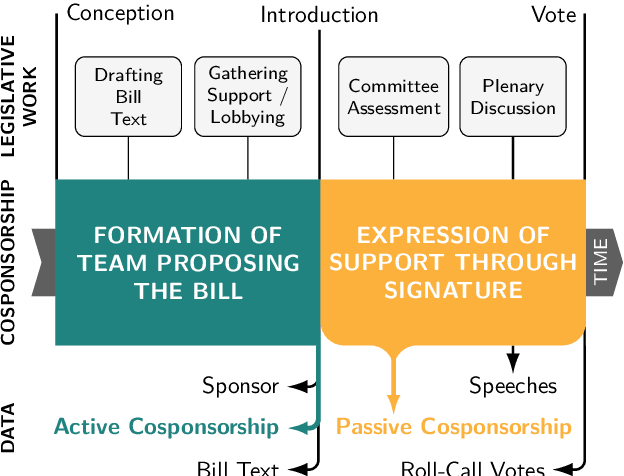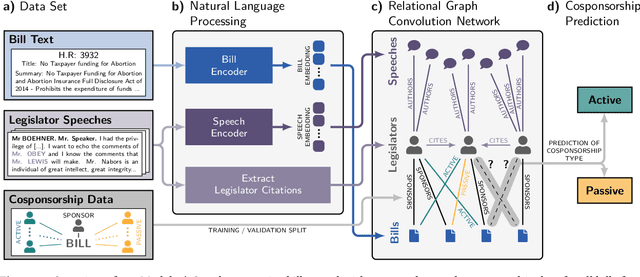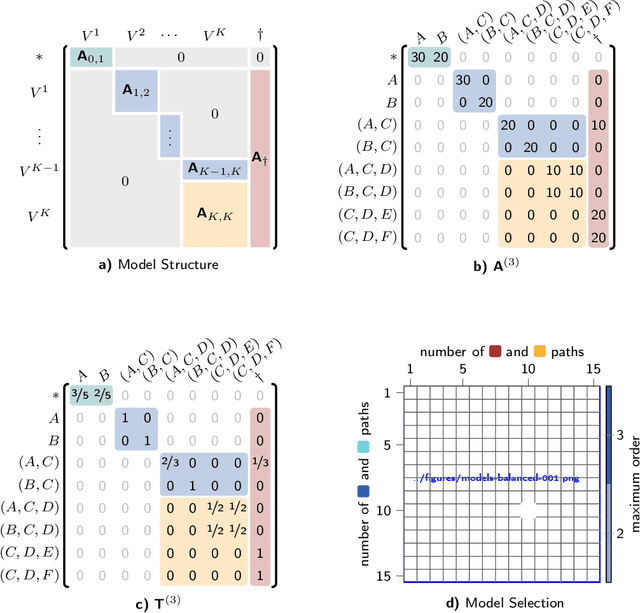Christoph Gote
Disentangling Active and Passive Cosponsorship in the U.S. Congress
May 19, 2022



Abstract:In the U.S. Congress, legislators can use active and passive cosponsorship to support bills. We show that these two types of cosponsorship are driven by two different motivations: the backing of political colleagues and the backing of the bill's content. To this end, we develop an Encoder+RGCN based model that learns legislator representations from bill texts and speech transcripts. These representations predict active and passive cosponsorship with an F1-score of 0.88. Applying our representations to predict voting decisions, we show that they are interpretable and generalize to unseen tasks.
Predicting Influential Higher-Order Patterns in Temporal Network Data
Jul 26, 2021



Abstract:Networks are frequently used to model complex systems comprised of interacting elements. While links capture the topology of direct interactions, the true complexity of many systems originates from higher-order patterns in paths by which nodes can indirectly influence each other. Path data, representing ordered sequences of consecutive direct interactions, can be used to model these patterns. However, to avoid overfitting, such models should only consider those higher-order patterns for which the data provide sufficient statistical evidence. On the other hand, we hypothesise that network models, which capture only direct interactions, underfit higher-order patterns present in data. Consequently, both approaches are likely to misidentify influential nodes in complex networks. We contribute to this issue by proposing eight centrality measures based on MOGen, a multi-order generative model that accounts for all paths up to a maximum distance but disregards paths at higher distances. We compare MOGen-based centralities to equivalent measures for network models and path data in a prediction experiment where we aim to identify influential nodes in out-of-sample data. Our results show strong evidence supporting our hypothesis. MOGen consistently outperforms both the network model and path-based prediction. We further show that the performance difference between MOGen and the path-based approach disappears if we have sufficient observations, confirming that the error is due to overfitting.
Predicting Sequences of Traversed Nodes in Graphs using Network Models with Multiple Higher Orders
Jul 13, 2020



Abstract:We propose a novel sequence prediction method for sequential data capturing node traversals in graphs. Our method builds on a statistical modelling framework that combines multiple higher-order network models into a single multi-order model. We develop a technique to fit such multi-order models in empirical sequential data and to select the optimal maximum order. Our framework facilitates both next-element and full sequence prediction given a sequence-prefix of any length. We evaluate our model based on six empirical data sets containing sequences from website navigation as well as public transport systems. The results show that our method out-performs state-of-the-art algorithms for next-element prediction. We further demonstrate the accuracy of our method during out-of-sample sequence prediction and validate that our method can scale to data sets with millions of sequences.
 Add to Chrome
Add to Chrome Add to Firefox
Add to Firefox Add to Edge
Add to Edge